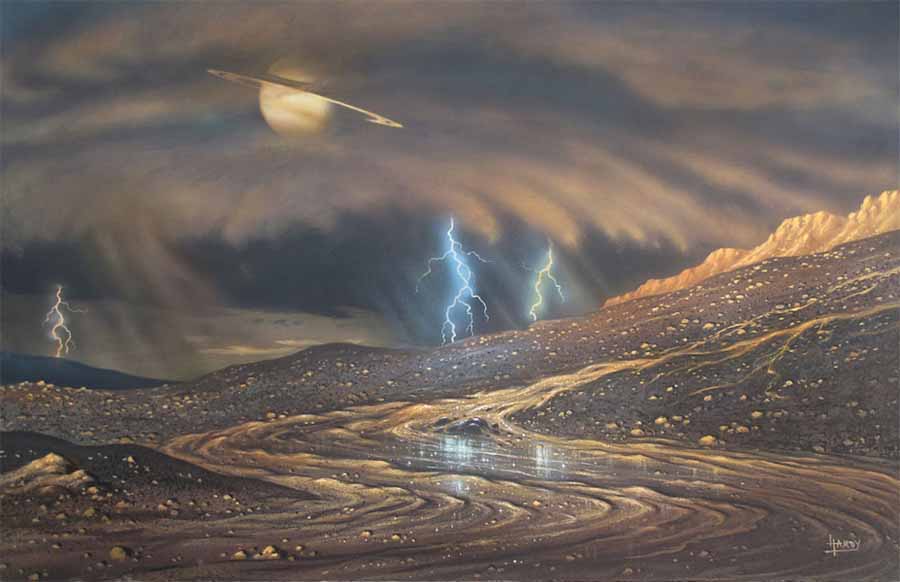This week, Mercury highlighted the news and this blog. Now we move on to Saturn and this really cool photo. There's April showers in the city today, but it's also raining on Titan - the largest moon of Saturn, the only natural satellite known to have a dense atmosphere, and the only object other than Earth for which clear evidence of stable bodies of surface liquid has been found. The satellite has thus been cited as a possible host for microbial extraterrestrial life or, at least, as a prebiotic environment rich in complex organic chemistry.

It's Raining on Titan
NASA - April 1, 2011Explanation: It's been raining on Titan. In fact, it's likely been raining methane on Titan and that's not an April Fools' joke. The almost familiar scene depicted in this artist's vision of the surface of Saturn's largest moon looks across an eroding landscape into a stormy sky. That scenario is consistent with seasonal rain storms temporarily darkening Titan's surface along the moon's equatorial regions, as seen by instruments onboard the Cassini spacecraft. Of course on frigid Titan, with surface temperatures of about -290 degrees F (-180 degrees C), the cycle of evaporation, cloud formation, and rain involves liquid methane instead of water. Lightning could also be possible in Titan's thick, nitrogen-rich atmosphere.
 Saturn's Moon Titan Google Videos
Saturn's Moon Titan Google Videos Saturn's Moon Titan Google Images
In the News ...
Saturn will star Sunday evening SoCal - April 1, 2011
Saturn will be at its best and brightest on Sunday evening and will be the only planet in the evening sky all month. The planet will be so bright, viewers won't necessarily need a telescope to see its rings. A set of binoculars with at least 20-power magnification will be sufficient, said Tyler Nordgren, a physics professor at the University of Redlands. Saturn takes its starring role in the sky each April, when the planet is in opposition to the sun. That means that as the sun sets in the west, Saturn rises in the east. To the naked eye, Saturn looks like a bright, golden-colored star that does not flicker. On Sunday, it will rise at 7:06 p.m.